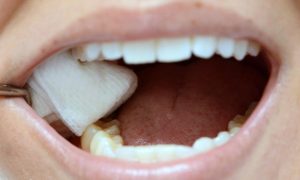
Tooth extraction is a common dental procedure often done to alleviate pain, treat infections, or make way for other dental treatments. Following the extraction, it’s essential to manage the post-operative period for a smooth and complication-free healing process. Gauze plays a crucial role in this phase by controlling bleeding and promoting blood clot formation at the extraction site. But how do you know when it’s time to say goodbye to the gauze? In this blog post, we’ll guide you through when and how to stop using gauze after a tooth extraction.
Also Read: Dental Health: Your Path to a Beautiful Smile
[ez-toc]
The Importance of Gauze After Tooth Extraction
Controlling Bleeding: Gauze helps control bleeding by applying gentle pressure to the extraction site. This is critical for the initial stages of healing to allow a blood clot to form, which is essential for the healing process.
Protecting the Blood Clot: The blood clot that forms in the tooth socket after extraction acts as a protective barrier. Gauze helps keep the blood clot in place and prevents dry socket, a painful condition where the clot dislodges or dissolves prematurely.
Aiding in Swelling and Pain Management: Gauze can assist in reducing swelling and managing initial pain by providing support and compression to the extraction site.
When to Stop Using Gauze After Tooth Extraction
First Hour Post-Extraction:
Immediately after the tooth extraction, you’ll be asked to bite down on a piece of gauze for about 30 to 45 minutes. This helps control bleeding and allows a blood clot to form.
Check the Bleeding:
After the first hour, carefully remove the gauze and check for any persistent bleeding. If the bleeding has significantly subsided or stopped, it may be time to discontinue using gauze.
Observe Blood Clot Formation:
If a well-formed blood clot is visible at the extraction site and there’s no oozing or active bleeding, it’s an indication that the initial clotting process is successful.
Consult with Your Dentist:
It’s crucial to follow your dentist’s specific post-operative instructions. If you’re unsure about when to stop using gauze, consult your dentist for guidance.
Tips for a Smooth Recovery
Follow Post-Operative Instructions:
Adhere to the specific instructions provided by your dentist or oral surgeon regarding gauze use, wound care, medications, and diet.
Avoid Disturbing the Blood Clot:
Be cautious not to disturb the blood clot by avoiding vigorous rinsing, spitting, or using straws during the initial healing phase.
Maintain Good Oral Hygiene:
Follow gentle oral hygiene practices recommended by your dentist to keep the extraction site clean and promote healing.
Attend Follow-Up Appointments:
Attend scheduled follow-up appointments to ensure proper healing and address any concerns promptly.
Remember, each person’s healing process may vary slightly, so it’s essential to listen to your body and follow the guidance of your dental care team. If you have any worries or uncertainties during your recovery, don’t hesitate to reach out to your dentist for assistance and clarification. A smooth recovery paves the way for a healthy, pain-free mouth and a beautiful smile.